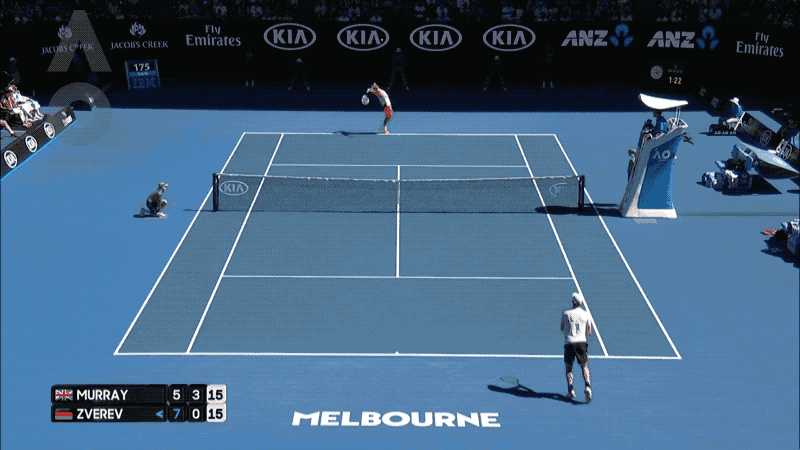Are Net Points Murray's Kryptonite?
29 Apr 2017Despite starting the 2017 season as World No. 1 for the first time in his career, Andy Murray has had a lackluster go of it so far. After Murray’s Round of 16 loss at the Monte Carlo Masters last week, his match record was 13 and 4. Now, in terms of wins and losses alone, that puts him on par with his performances thru the end of April in 2016 and 2014, but far behind his record in 2015 when he had bagged 23 wins and just 5 losses by this point in the calendar.
But even with a match record that isn’t all that dissimilar to recent season starts, something seems off with Murray. This sense comes not only from the losses themselves but how and to whom he has lost.
Between 2012 and 2016, Murray has lost no more than 1 match to a player outside of the top 30 during the first 4 months of the season. Yet this year he has already had 2 losses to players outside the top 30 (Mischa Zverev in the 4th round of the Australian Open and Vasek Pospisil in the 2nd round of Indian Wells) not to mention a close call to Gilles Muller in the first round of Monte Carlo.
Why has Murray struggled more this season against the tour’s underdogs?
You only have to watch a few games from those matches against Zverev, Pospisil, and Muller to find the answer: net points. Compared to most men’s matches, these opponents played a much more aggressive game characterized by an unusually high number of points at net. Take Mischa Zverev, one of the rare serve-and-volleyers still on tour. When he faced Murray at the Australian Open, he played 152 points at net out of the 280 points played in the match. Most Grand Slam matches have 20% or fewer points at net. You can see an example of his style in the 2nd set point shown in the clip below.

Not many players are as risk-taking as Zverev but they seem to think he was on to something. So Pospisil and Muller tried the same formula. It worked well for Pospisil but, after losing the first set in Monte Carlo, Muller fell back to a more familiar defensive style of play.
The big question is why net points and the more attacking style of play that goes along with them might cause trouble for Murray?
Since, after upsetting Murray, Mischa Zverev used the same style of play against Roger Federer and lost, that match provides an interesting comparison to try to understand whether there was anything that Federer did to better neutralize the net game.
The first factor I was interested to look at was court position. Specifically, I wanted to understand where Murray usually positioned himself during net points against Zverev? And how did that compare to how Federer was positioned?
I approached the question by looking at 3 snapshots of net points in the matches against Zverev. The snapshots follow three different moments in the unfolding of a net point: the time when Zverev began to approach, the time once he was at net, and the time of impact of the next shot. Note that these are all occasions when Zverev made a shot while approaching so would technically be ‘net approach shots’.
The first chart below shows Federer and Murray’s positions at the start of Zverev’s approaches. Note how much more often Murray was behind the baseline, either centrally located or to the right of the court, leaving the backhand side more of an open target.
Next we see where each player moved once Zverev was settled at net. Interestingly, Federer has a much more consistent pattern of going slightly to the left and a step or two inside the baseline. This position would give Federer more ability to use his forehand and give him less space to have to cover if he were to come to net. Murray has some overlap with the positioning of Federer, but he keeps deeper into the court and also has some occasions of getting pulled off to the right, again leaving more of an open court on his backhand side.
When we then look to where Federer and Murray were at the time of their next shot, we see the Murray was having to play the backhand much more while Federer, being more centrally positioned, would have a greater ability to choose his shot.
The clip from the 4th game of the 2nd set shown above shows an example of how Zverev played to Murray’s backhand and won a high percentage of net points. Although positioning isn’t the whole story, it does appear that, compared to Federer, Murray might have helped Zverev carry out his strategy by leaving more of the court on the left-hand side open to attack. Without more data on positioning from his other matches, we can’t say whether the same pattern underlay his struggles against other net game strategies but it will be something we can watch for over the rest of the season.
If you liked this story, share it with your followers or follow this site @StatsOnTheT on Twitter.
